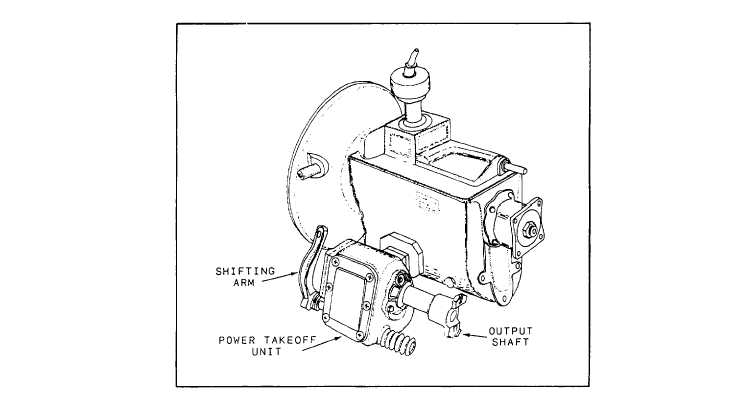TROUBLESHOOTING THE POWER TAKEOFF
Power takeoffs are attachments in the power train for power to drive auxiliary accessories. They are attached to the transmission, auxiliary transmission, or transfer case. A common type of power takeoff is the single-gear, single-speed type. This unit is bolted to art opening provided in the side of the transmission case, as shown in figure 11-15. The sliding gear of the power takeoff will then mesh with the transmission countershaft gear. The operator can move a shifter shaft control lever to slide the gear in and out of mesh with the countershaft gear. The spring-loaded ball holds the shifter shaft in position.
On some vehicles, you will find power takeoff units with gear arrangements that will give two speeds forward and one in reverse. Several forward speeds and reverse gear arrangements are usually provided in power takeoff units that operate winches and hoists. Their operation is about the same as the single-speed units.
The troubleshooting and repair procedures for the power takeoff are similar to those for the transfer case and are listed in table 11-3.
TROUBLESHOOTING THE PROPELLER SHAFT ASSEMBLY
The propeller shaft, or drive shaft, assembly consists of the shaft, a splined slip joint, and one or more universal joints. This assembly provides a flexible connection through which power is transmitted from the transmission to the differential. The propeller shaft is almost always tubular.
A splined slip joint is provided at one end of the propeller shaft to take care of end play. The driving axle, being attached to the springs, is free to move up and down while the transmission is attached to the frame and cannot move. Any upward or downward movement of the axle, as the springs are flexed, shortens or lengthens the distance between the axle assembly and the transmission. To compensate for this changing distance, the slip joint is provided at one end of the propeller shaft.
The usual type of splined slip joint consists of a splined stub shaft welded to the propeller shaft that fits into a splined sleeve. A cross-sectional view of the splined slip joint and universal joint is shown in figure 11-16.
A universal joint is a connection between two shafts that permits one to drive the other at an angle. Passenger

Figure 11-15. - Power takeoff mounted on a vehicle transmission.
Continue Reading